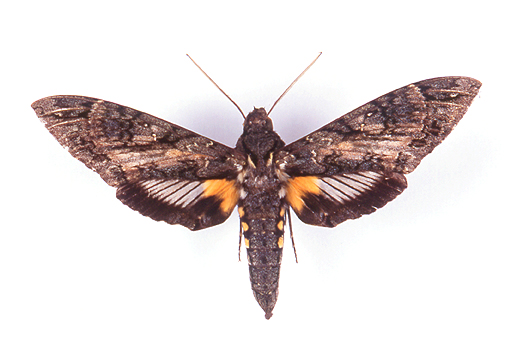Giant Sphinx Moth (Cocytius antaeus)
Pricing: No Specimens Available For Sale
Geographic Range: Southern U.S.A. to Southern Brazil
View: Top View Size: Wingspan: 12.6 - 17.8 cm

Image Copyright 2003
Barbara Strnadova
The Giant Sphinx, Cocytius antaeus, is the largest sphinx moth in North America, with a wingspan of 5-7 inches. It is a Neotropical moth, favoring tropical and subtropical lowlands. A resident in tropical America from Mexico south to Brazil, it is also found in Jamaica, Florida and, occasionally, southern Texas. A powerful flier, this moth has been recorded as a stray in places as far-flung as the Galapagos Islands and the city of Chicago, Illinois. C. antaeus adults sip nectar at flowers and fly in several broods throughout the year. Females call in the males, who are much smaller than females, using pheromones released from a gland at the tip of the abdomen. Females later deposit eggs singly on leaves of various species of Annona, including A. glabra, the pond apple. Mature caterpillars are large, weighing 20.81 grams, with a horn at the rear end. They are a uniform green with a dark purple dorsal stripe and posterior side-slash of white. Moths emerge approximately 30 days after larvae pupate, which is done underground. C. antaeus is very similar to C. duponchel, a moth which shares some of it’s range. The two can be distinguished by the yellow splotch at the base of the hindwing, which is divided in C. duponchel. Also, the transparent breach in the hindwing is reduced in C. duponchel. Larvae are subject to parasitization by some tachinid flies.